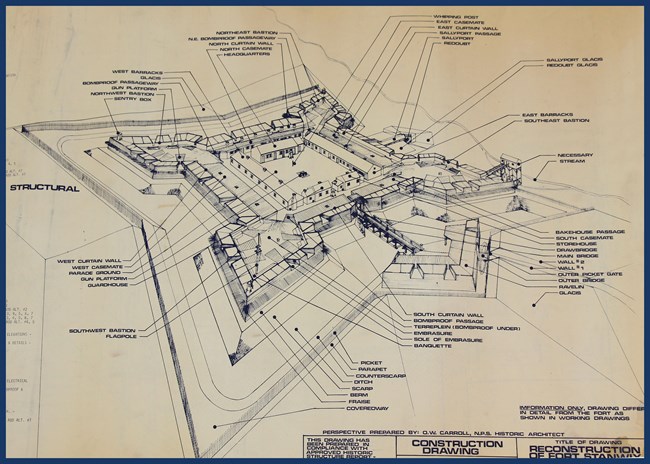
For the past 40 years, Fort Stanwix has stood as a reconstruction nestled in the heart of Rome, New York. The road to reconstructing the 18th century past was led by members of the Rome community and forever changed the City of Rome. These images and film clips visually represent the process of reconstructing Fort Stanwix. This exhibit is also on display at two venues that each provide a different perspective of these events. If you would like to experience this exhibit in person, be sure to visit the park's visitor center and Rome Historical Society. 
Welcome Friends! Welcome Strangers! On this Greatest of Great Days
Fort Stanwix and Oriskany Come Forth from the Distant Past, Reincarnate! May the Memory of this Event be Cherished by You, as Will Your Presence Always be to Our People, a Charming Recollection ~ Headline of Rome Daily Sentinel, August 6, 1927. 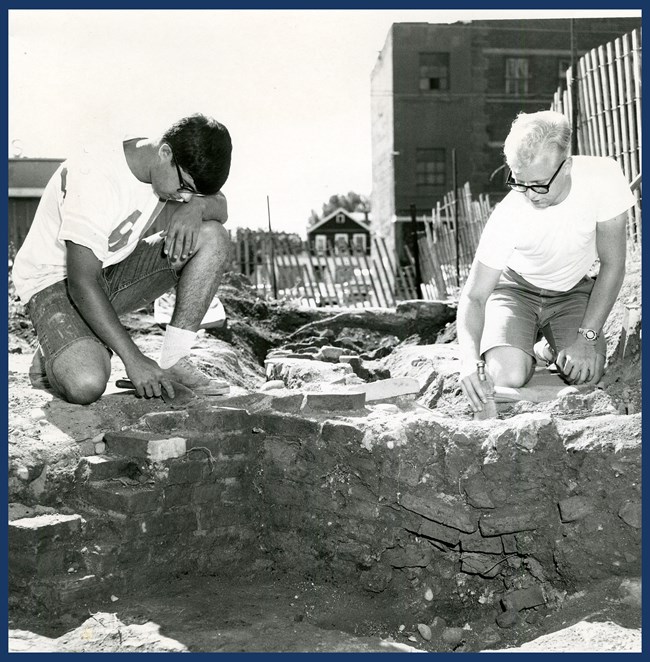
Interest in the site continued to grow in the community and the Fort Stanwix Museum, operated by the Rome Historical Society (RHS), set out to locate the archeological remains of Fort Stanwix. 
Former Airforce Colonel, J. Duncan Campbell, “boldly argued that more than 60 percent of the original fort features were still recoverable, leaving open the door for further archaeological work.” ~ Reconstructing the Past and Partnering for the Future: Fort Stanwix National Monument, 2008. 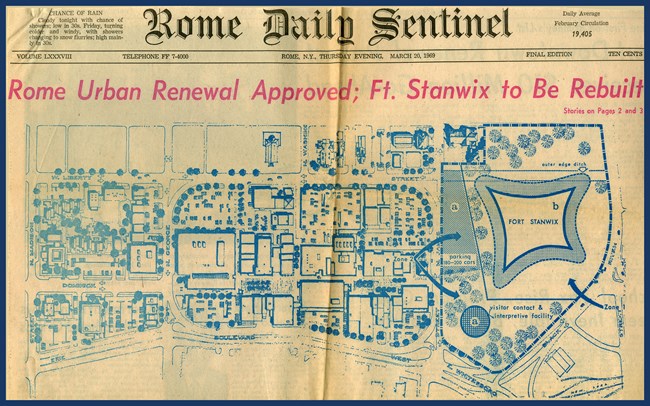
A Community“I think that when National Park Service finally made the commitment that as part of the urban renewal project, they would rebuild Fort Stanwix, that is the real impetus...and gave the project a national prominence.” ~ William Flinchbaugh, Executive Director City of Rome Urban Renewal, 1976.
Visit our keyboard shortcuts docs for details
Short video clip from the film "Made in America: Rome New York" that highlights the planning and urban renewal aspects of reconstructing Fort Stanwix. (Fort Stanwix National Monument Collection, FOST 22977) 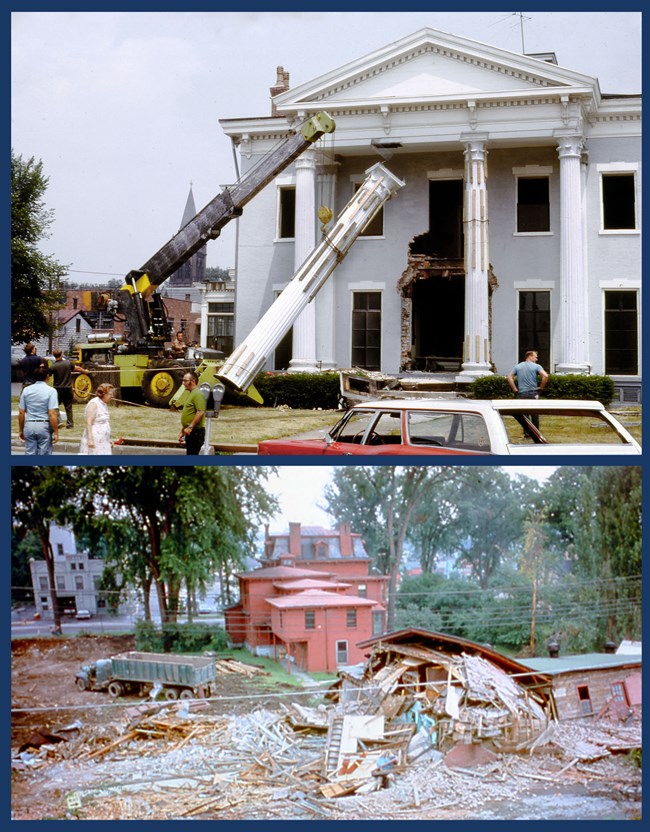
investigations in July, 1970, under Dick Ping Hsu…" ~ Casemates and Cannonballs: Archeological Investigations at Fort Stanwix National Monument, 1975. Dick Hsu's Field Journal Entry: July 15, 1970 We began work at 8:10 AM. It was overcast and cool. There was no slumpage during the night, but there was some quite regularly during the day. It began raining steadily at 8:45 AM. The demolition of the gym and swimming pool began at 10:45 AM. The entire building was down by 4:00 PM. I continued explorations in the Carpenters Temple in the afternoon. At 4:00 PM we erected a fence across Willett Street. Afternoon was cool and partly cloudy. We began extending Excavation Unit #1. Had Benedict and Getzels removing dark ground features of an old fireplace as training in the use of the trowel. 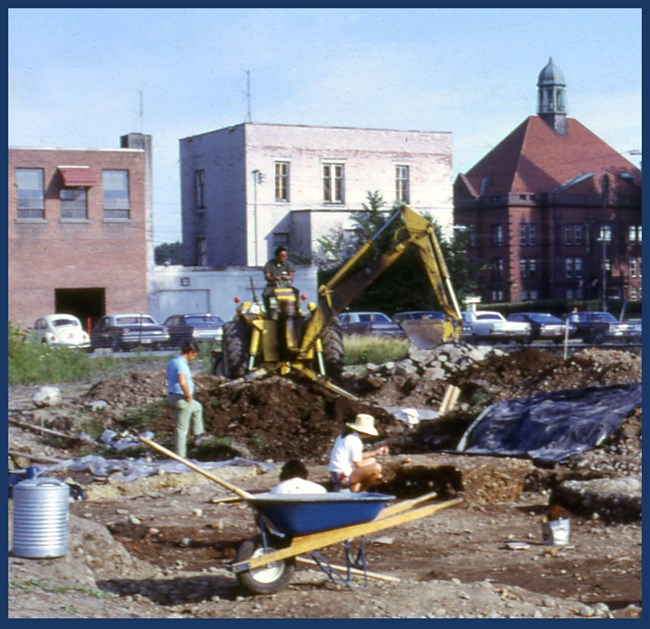
"Because of the lack of time and a limit to the area available for excavation (the site was still inhabited) work during the first season concentrated on locating the fort, and identifying key features to which 18th-century plans could be related.” ~ Casemates and Cannonballs: Archeological Investigations at Fort Stanwix National Monument, 1975. Transcript
No audio
Visit our keyboard shortcuts docs for details
Various clips of the archeological excavations that took place in the 1970s to uncover remains of Fort Stanwix. Fort Stanwix National Monument Collection, FOST 22244. (No sound) 
A Fort“Before a reconstructed fort could stand on the spot of the old Fort Stanwix, architectural drawings had to translate the archeological findings and historical research into a three-dimensional structure of defendable accuracy.” ~ Fort Stanwix National Monument: Reconstructing the Past and Partnering for the Future, 2008. 
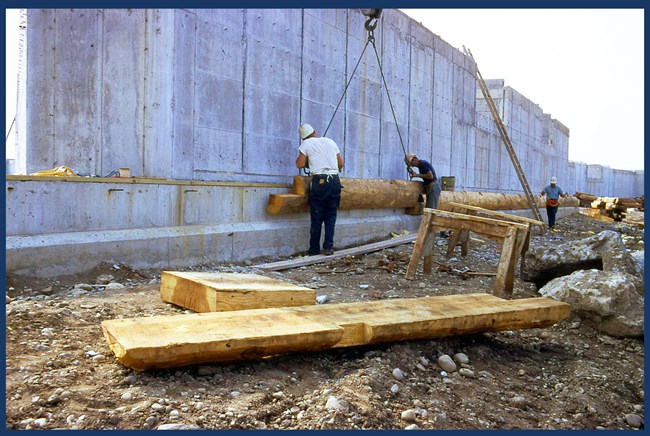
The true thing that's holding it together is concrete, about 8,000 yards of concrete and 250,000 pounds of reinforcing steel. Because this is the idea: with this concrete in there, they figure it's going to last 200, another 200 years. We gave 200 years, it'll last 200 years, so they say.” ~ Joseph Smith, Jr., Contractor Made in America: Rome, NY, 1976. Transcript
No dialogue, sounds of hammer hitting wood
Visit our keyboard shortcuts docs for details
Film clip from "Made in America: Rome New York" featuring construction activities. Fort Stanwix National Monument Collection, FOST 22977. (No dialogue, sounds of hammer hitting wood) 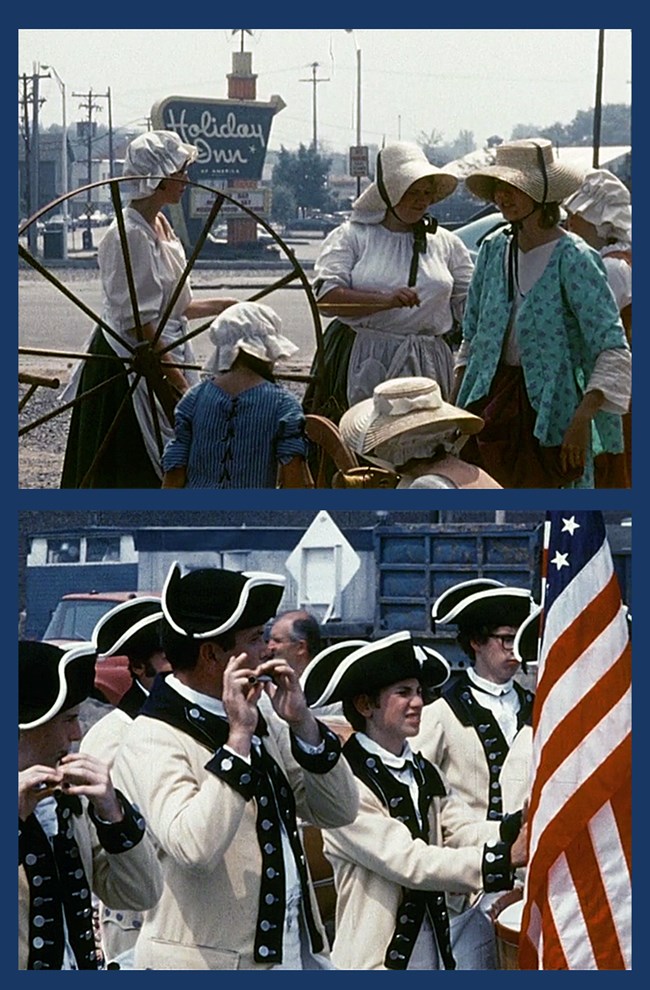
A Future“May this Fort stand as a reminder of the sacrifices made by our Revolutionary soldiers who served here and as a tribute to the 20th Century Americans who banded together to restore and preserve this vital part of our national heritage.” ~ Thomas Kelppe, Secretary of the Interior, Speech given on May 22, 1976. On May 20, 1976, the reconstructed fort opened to the public under much pomp and circumstance. Approximately 90 volunteers had been preparing for the public since 1973 with the formation of the Fort Stanwix Garrison. Transcript
Fife and drum music with intermittent, inaudible commands yelled by a man
Visit our keyboard shortcuts docs for details
Clip from "Made in America: Rome New York" that shows the opening ceremony of Fort Stanwix National Monument. Fort Stanwix National Monument Collection, FOST 22977. (Fife and drum music with intermittent, inaudible commands yelled by a man) Even though this project is near to completion, near reality, it's still embryonic, as it will affect the life of this community...the good years are all in the future.~ William Flinchbaugh, Executive Director Rome Urban Renewal
Made in America: Rome, NY Annual Visitation to
Fort Stanwix Since Opening 1976 ~ 211,700 1977 ~ 102,000 1978 ~ 87,043 1979 ~ 68,288 1980 ~ 64,975 1981 ~ 60,696 1982 ~ 66,595 1983 ~ 63,154 1984 ~ 56,352 1985 ~ 67,100 1986 ~ 57,857 1987 ~ 45,338 1988 ~ 52,659 1989 ~ 51,271 1990 ~ 53,007 1991 ~ 57,172 1992 ~ 59,621 1993 ~ 54,785 1994 ~ 50,193 1995 ~ 56,139 1996 ~ 48,429 1997 ~ 82,552 1998 ~ 46,007 1999 ~ 51,228 2000 ~ 38,667 2001 ~ 53,065 2002 ~ 77,863 2003 ~ 56,646 2004 ~ 68,427 2005 ~ 38,237 2006 ~ 60,589 2007 ~ 59,643 2008 ~ 71,263 2009 ~ 93,170 2010 ~ 103,748 2011 ~ 102,874 2012 ~ 195,057 2013 ~ 129,089 2014 ~ 60,819 2015 ~ 86,678 2016 ~ 94,006 Total ~ 2,997,864 As the National Park Service moves through the next 100 years, Fort Stanwix National Monument remains dedicated to preserving the archeology of the fort, the objects from the people who lived here, and the reconstruction as a way to educate and inspire the next generation Americans with the local histories of resilience, freedom, and community here in Rome. |
Last updated: October 19, 2017
